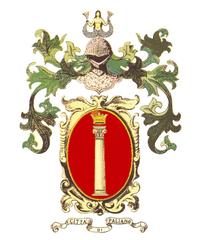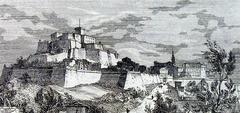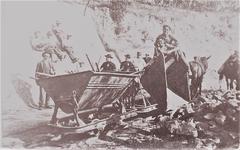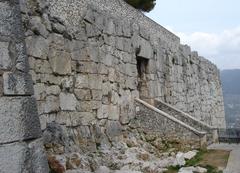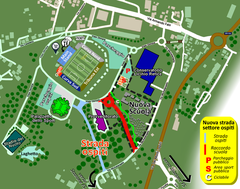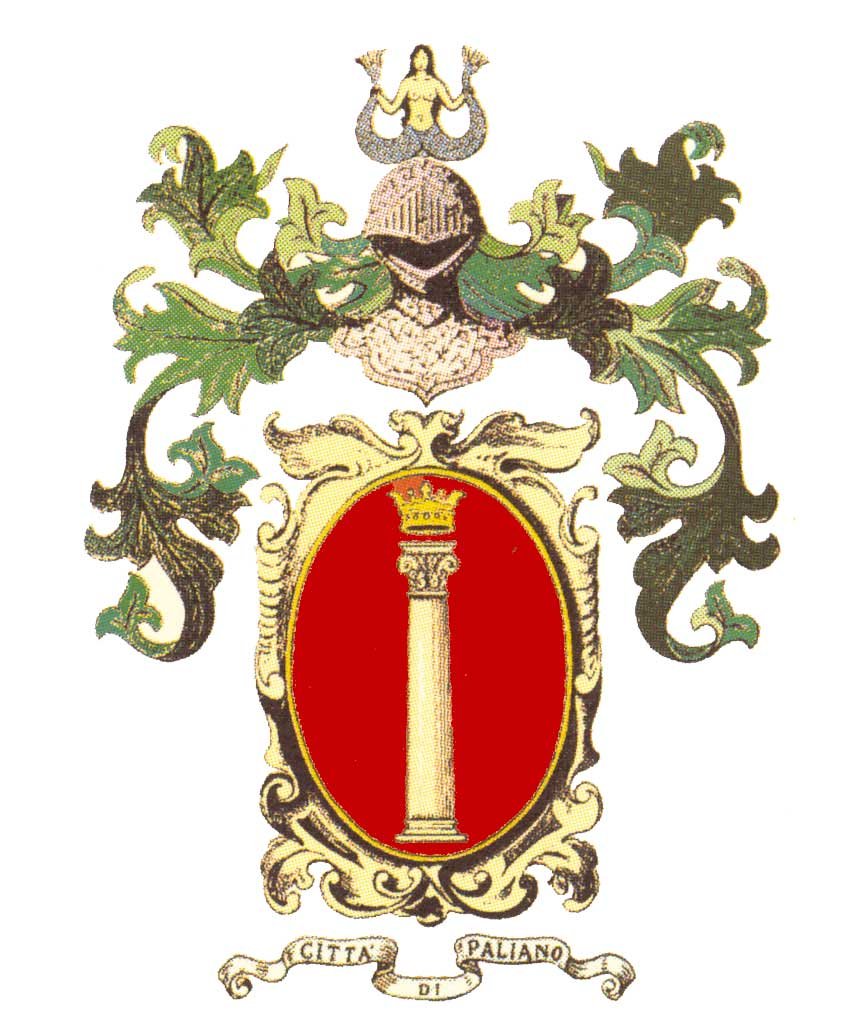
Paliano Visiting Hours, Tickets, and Historical Sites Guide
Date: 14/06/2025
Introduction: Discover Paliano’s Timeless Charms
Nestled in the scenic province of Frosinone within Italy’s Lazio region, Paliano is a captivating destination that harmoniously blends rich history, vibrant culture, and breathtaking landscapes. Renowned for its medieval architecture—most notably the imposing Colonna Castle—Paliano invites visitors on an immersive journey from its ancient Etruscan and Roman roots to its pivotal role in medieval power struggles between noble families. Today, Paliano remains a vibrant cultural hub, where centuries-old traditions come alive through festivals, artisanal crafts, and authentic gastronomy, including the celebrated Cesanese del Piglio DOCG wine and local pasta specialties.
An hour’s drive from Rome, Paliano is easily accessible yet offers a tranquil escape into the Italian heartland. This guide provides comprehensive information on visiting hours, ticketing, accessibility, travel tips, and nearby attractions, ensuring you experience the very best of Paliano’s historical and cultural heritage. For up-to-date details, consult the official Paliano tourism website and trusted resources like Italia.it and Audiala.
Table of Contents
- Historical Overview: Ancient to Modern Paliano
- Paliano’s Cultural Landscape
- Key Visitor Information
- Festivals and Annual Events
- Historical Sites & Attractions
- Practical Visitor Tips
- Frequently Asked Questions (FAQ)
- Conclusion & Planning Resources
- References
1. Historical Overview: Ancient to Modern Paliano
Ancient and Medieval Roots
Paliano’s history is deeply woven into the fabric of central Italy. Archaeological evidence points to early settlements during the Etruscan era (Italian Traditions), followed by Roman influences that benefited the area’s infrastructure and economy due to proximity to Rome and key roads (Italia.it). With the fall of Rome, Paliano endured centuries of conflict, leading to the construction of the defensive fortifications that still define its skyline.
Medieval Power and Noble Families
During the Middle Ages, Paliano’s strategic value brought it under the sway of powerful families, most notably the Colonna, whose castle became both residence and fortress. The Colonna family’s complex relationship with the Papacy shaped the town’s development and left an enduring legacy in its architecture and traditions (Italia.it).
Integration and Modern Era
By the early modern period, Paliano was incorporated into the Papal States, experiencing administrative reforms and religious architectural growth. With Italian unification in the 19th century, Paliano modernized while maintaining much of its medieval character (Italian Traditions). Today, it is home to around 8,000 residents (CityPopulation.de) and thrives on a mix of agriculture, crafts, and growing cultural tourism.
2. Paliano’s Cultural Landscape
Community and Traditions
Paliano’s identity is shaped by its close-knit community, where the rhythm of daily life follows agricultural seasons, religious observances, and a calendar rich with festivals (The Curious Roamer). Artisanal crafts such as ceramics, textiles, and woodwork are displayed during local events, and intergenerational participation ensures heritage is passed down (TopicPie).
Gastronomy
Paliano’s cuisine reflects the broader Frosinone and Lazio traditions, with dishes such as gnocchi alla ciociara, porchetta, and classic Roman pastas (Travel to Italy Guide). Family-run trattorias and seasonal food festivals provide opportunities to savor these specialties and experience communal Italian dining culture.
3. Key Visitor Information
Colonna Castle (Castello Colonna)
- Visiting Hours: Tuesday–Sunday, 9:30 AM–6:30 PM. Closed Mondays. Seasonal variations possible.
- Tickets: Approx. €6 for adults; discounts for seniors, students, and groups. Purchase via official tourism site or at entry.
- Accessibility: Partial wheelchair access; contact tourism office in advance for assistance.
Churches and Museums
- Hours: Generally open 10:00 AM–5:00 PM; free or modest entry fees.
- Highlights: Church of San Giovanni Battista, Church of Sant’Andrea, and several small museums.
Guided Tours and Special Events
- Booking: Arrange through the Paliano tourism office.
- Events: Annual festivals (e.g., Festa di San Rocco), medieval reenactments, and agricultural fairs.
Getting There
- By Car: A1 motorway, about 1 hour from Rome.
- By Train: Nearest stations in Ferentino or Frosinone, with bus/taxi connections.
- Best Time: Spring and early autumn for mild weather and fewer crowds.
Nearby Attractions
- Abbey of Casamari, Anagni’s Roman ruins, Alatri’s medieval walls, and hiking/wine trails in Ciociaria (Komoot).
4. Festivals and Annual Events
Palio di Paliano (August)
A vibrant historical reenactment with parades, flag-throwing, and a horse race between town districts, culminating in festivities and open-air banquets (Understanding Italy).
Sagra dell’Uva (September)
Celebrates the grape harvest and Cesanese del Piglio wine with tastings, food stalls, music, and winery tours.
Religious Celebrations
Major events include the Feast of San Giovanni Battista (June 24) and various processions throughout the year (Audiala).
Infiorata and Food Festivals
Floral displays and open-air feasts highlight local produce, olive oil, cheese, and traditional recipes (Understanding Italy).
5. Historical Sites & Attractions
- Colonna Castle (Rocca di Paliano): Medieval stronghold with panoramic views, guided tours, and preserved frescoes.
- Church of San Giovanni Battista: Central to religious life and celebrations.
- Palazzo Colonna: 17th-century aristocratic residence, exteriors viewable year-round.
- Park La Selva: Nature trails and major festival venue.
- Historic Streets & Gates: Via Lepanto, Via Umberto I, and ancient town gates.
- Horse Museum Foundation: Equestrian heritage exhibits.
- Nearby: Anagni, Alatri, Caverns of Pastena, Caves of Collepardo.
6. Practical Visitor Tips
- Hours: Most sites open 9:00 AM–6:00 PM; always confirm ahead, especially during festivals.
- Tickets: Standard entry €5–€10; many festivals are free.
- Getting Around: Compact historic center, best explored on foot; car/cycle for countryside.
- Accommodation: Book early during festivals; options include historic B&Bs and agriturismi.
- Dining: Enjoy Ciociarian specialties and local wines in family-run eateries.
- Accessibility: Some cobblestone streets and inclines; plan ahead for mobility needs.
- Seasonal Highlights: Spring wildflowers, summer festivals, autumn harvest, winter holiday markets.
- Emergency Contacts: Medical (Anagni hospital, 10 km), police (112), tourism office.
Digital Resources:
Download the Audiala app for maps, guides, and event updates.
7. Frequently Asked Questions (FAQ)
Q: What are the visiting hours for Paliano’s main sites?
A: Typically 9:00 AM–6:00 PM; check official sources for seasonal changes.
Q: Are there tickets required for festivals and events?
A: Most festivals are free; entry fees apply to castles, museums, and select guided tours.
Q: How do I reach Paliano by public transport?
A: Train from Rome Termini to Anagni-Fiuggi station, then bus or taxi to Paliano.
Q: Is Paliano accessible for visitors with mobility issues?
A: Some areas have cobblestones and inclines; contact accommodations for specific accessibility.
Q: When is the best time to visit?
A: Late spring (May–June) and early autumn (September–October) for pleasant weather and cultural events.
Q: Are guided tours available?
A: Yes, in multiple languages; book in advance via the tourism office.
8. Conclusion & Planning Resources
Paliano stands as a living testament to the enduring spirit of central Italy, offering an enriching blend of history, culture, and natural beauty. Whether you’re drawn to the grandeur of Colonna Castle, the pageantry of the Palio di Paliano, or the flavors of authentic Ciociarian cuisine, every visit promises discovery and delight. For the latest information, consult the official Paliano tourism website, download the Audiala app, and explore related guides to plan an unforgettable journey.
9. References
- Italian Traditions - Lazio: The Complete Guide
- Italia.it - Lazio: Guide, History, Facts
- CityPopulation.de - Paliano Demographic Data
- Audiala - Paliano Travel Guide
- The Curious Roamer - Local Culture, Festivals, and Traditions
- TopicPie - Cultural Festivals
- Travel to Italy Guide - Frosinone Cuisine
- Understanding Italy - Frosinone Province
- Komoot - Attractions in Frosinone
- Official Paliano Tourism Website
